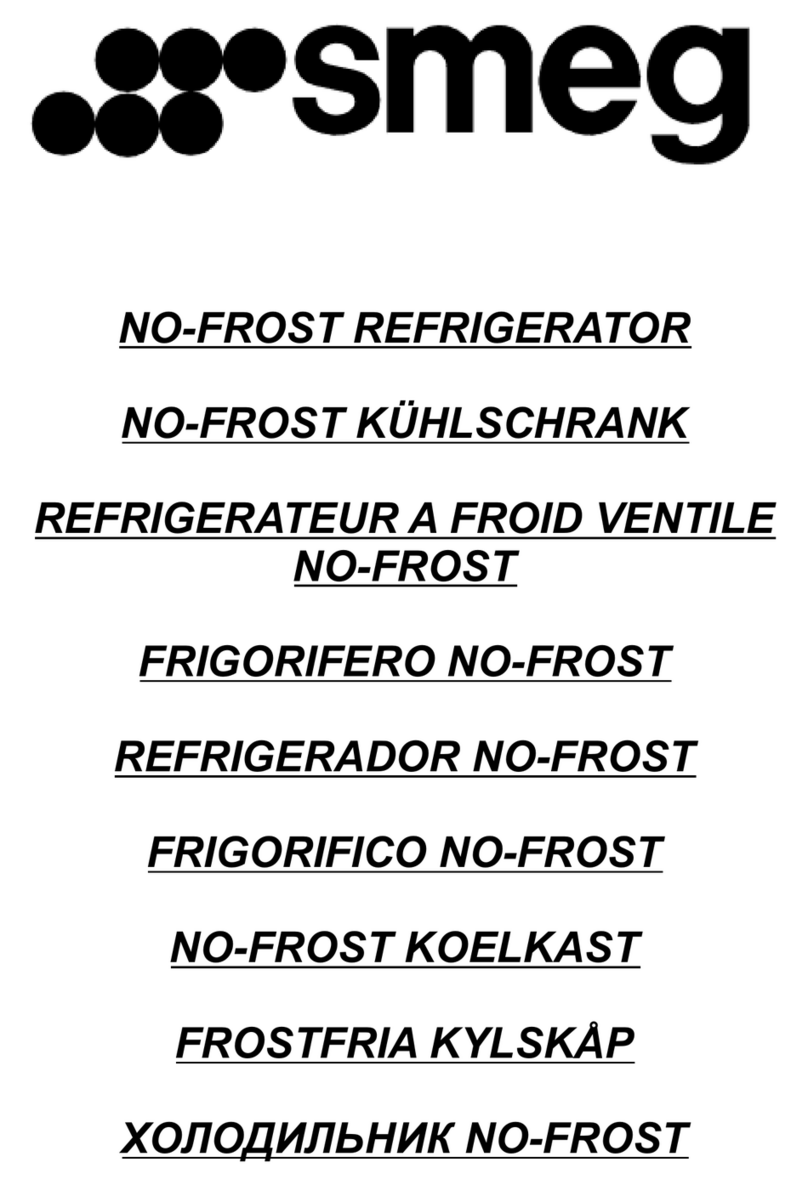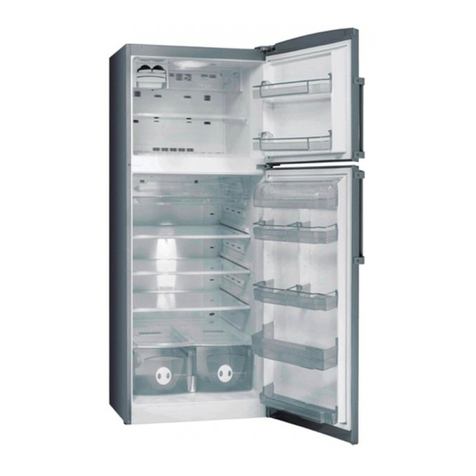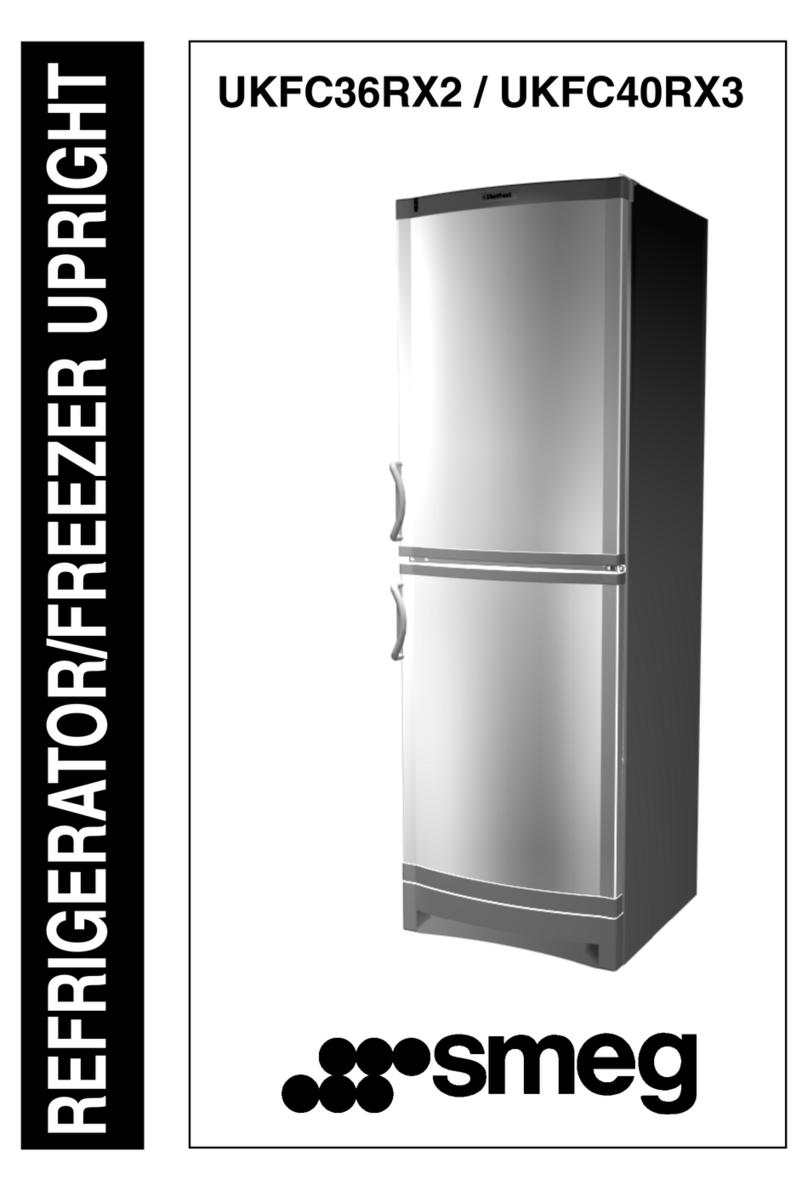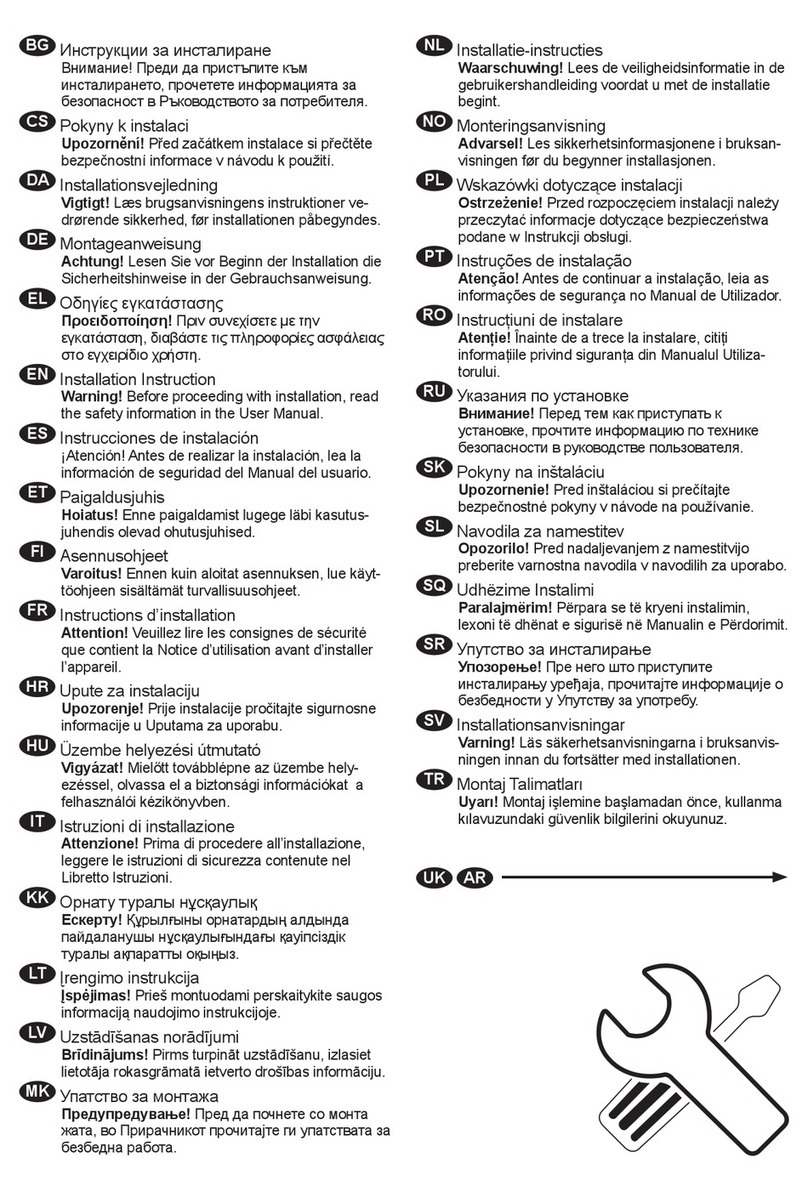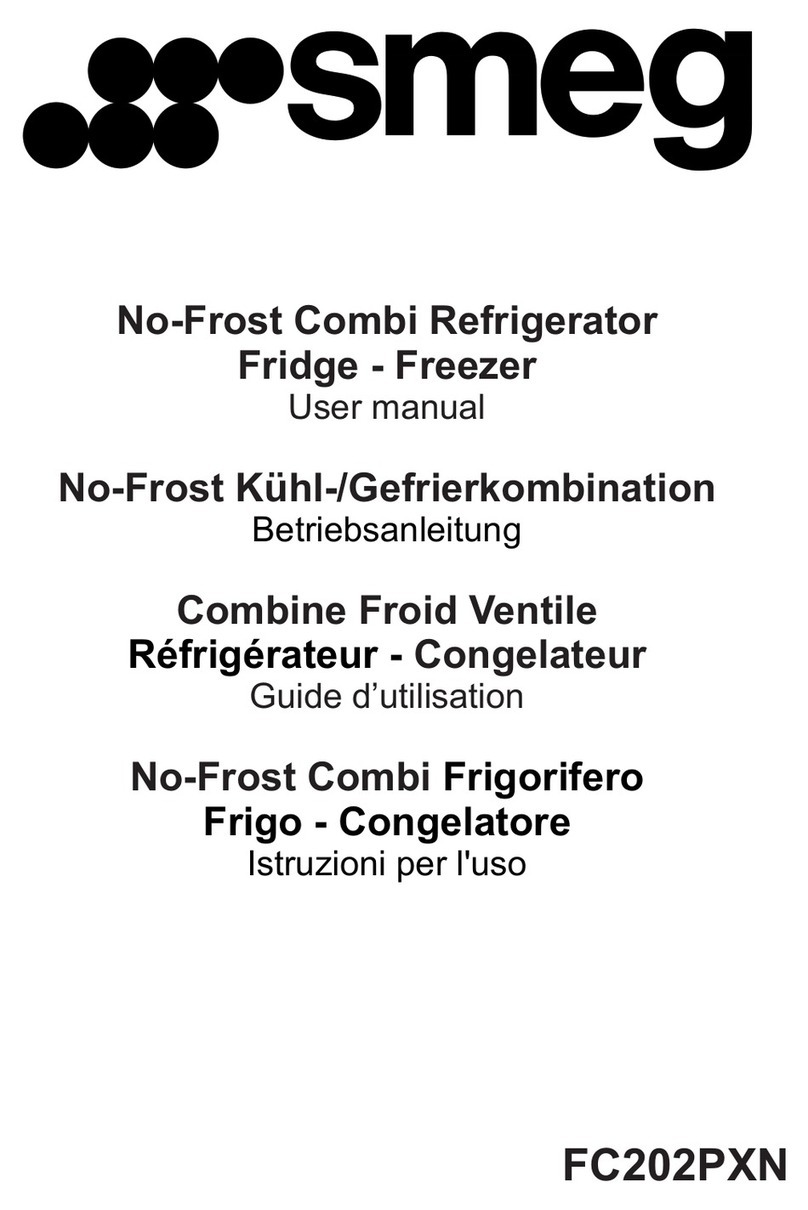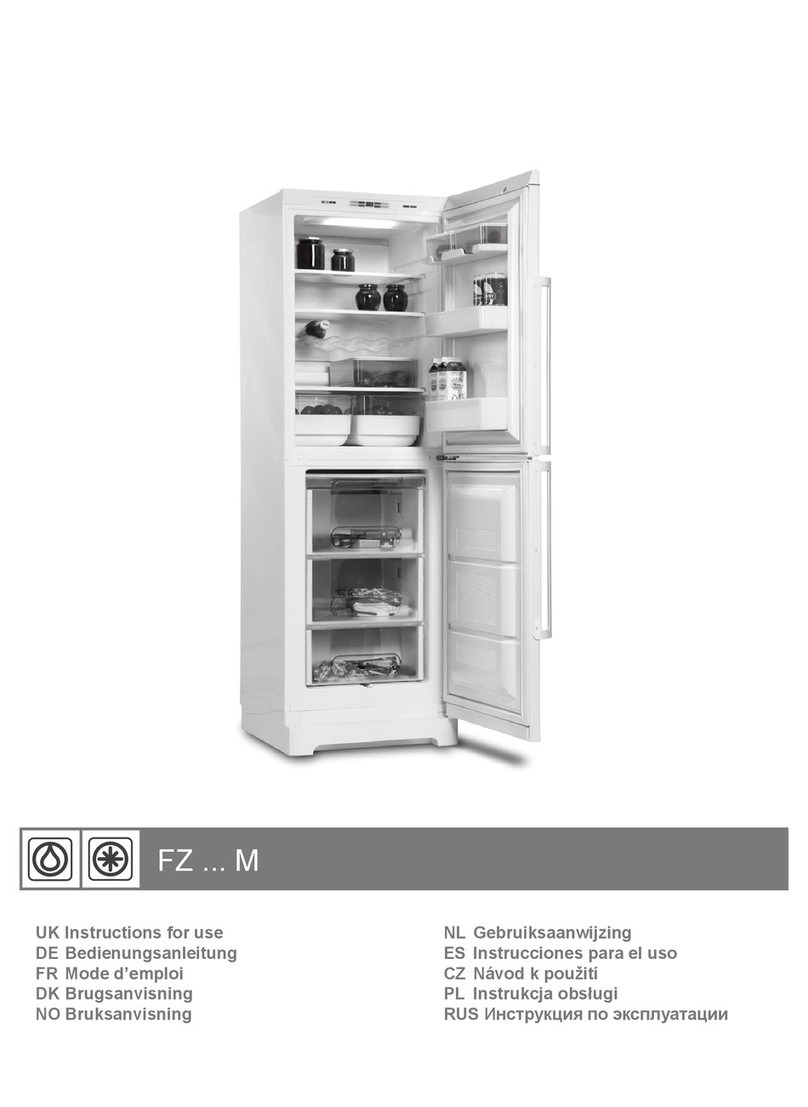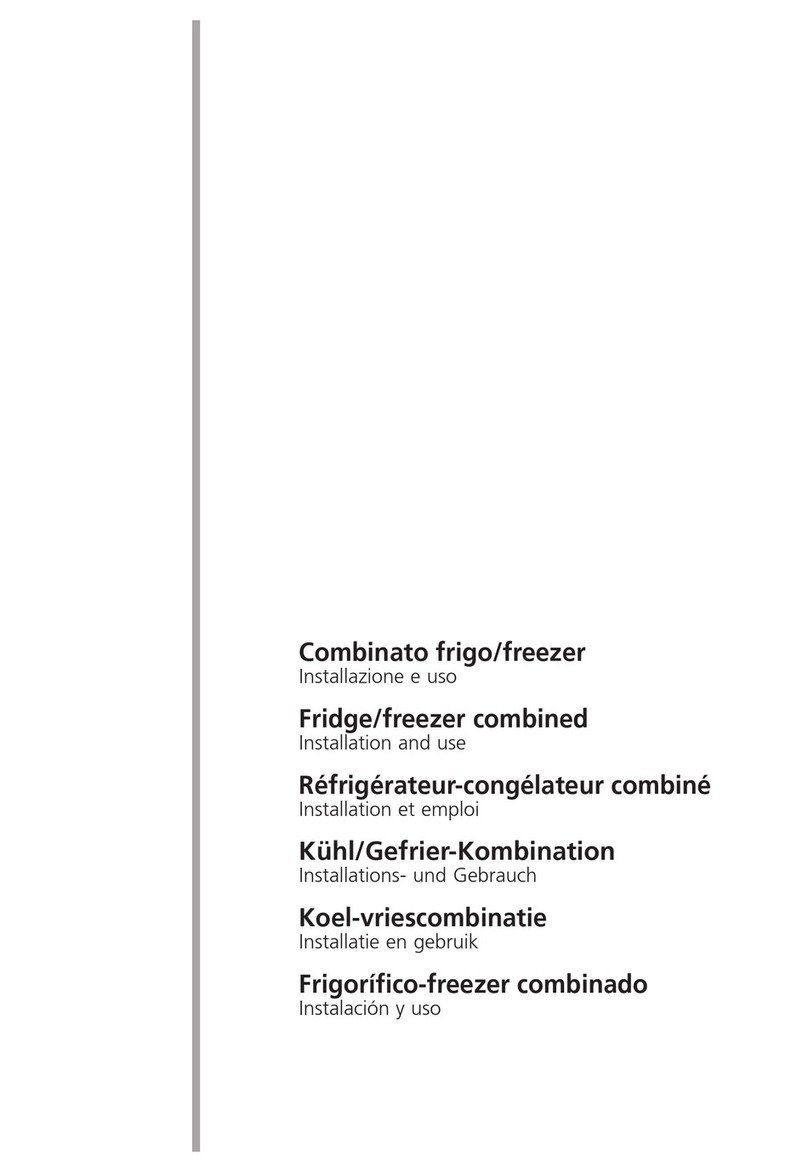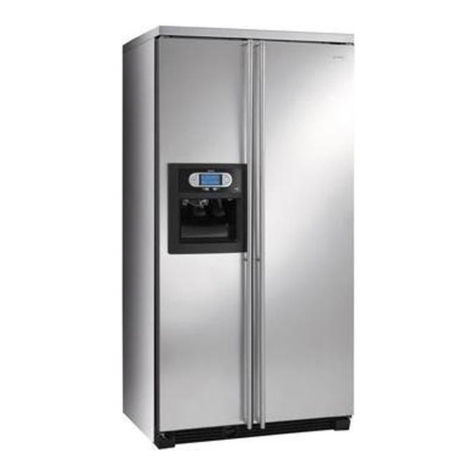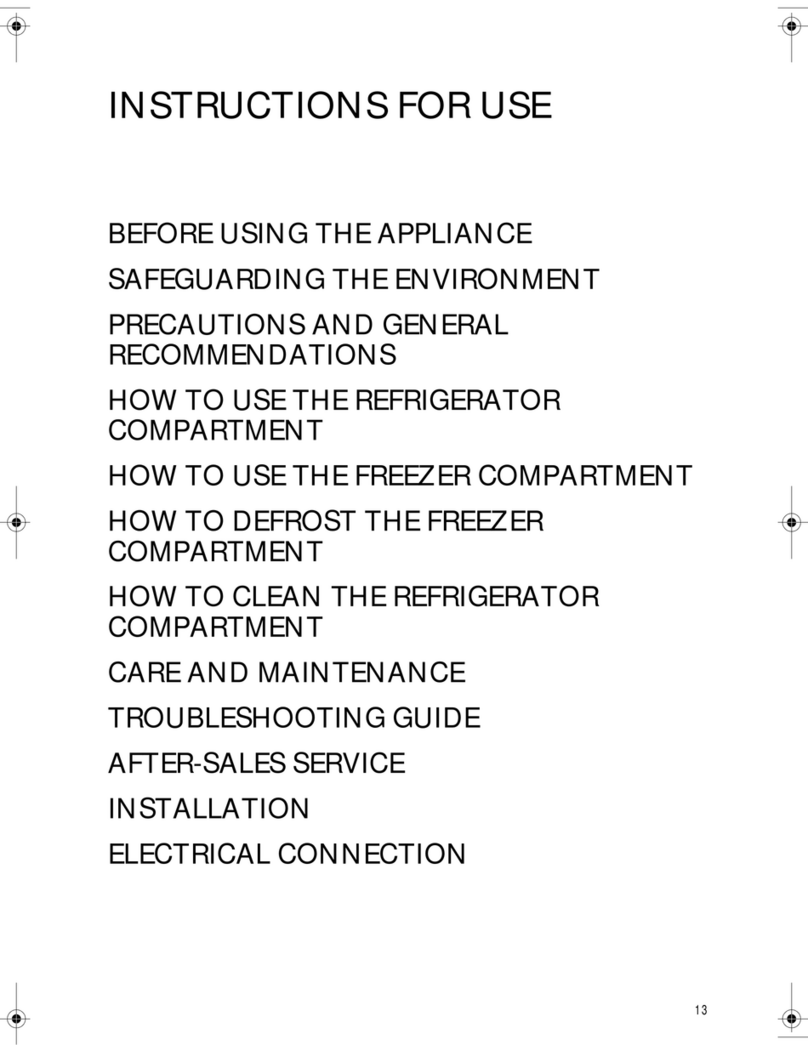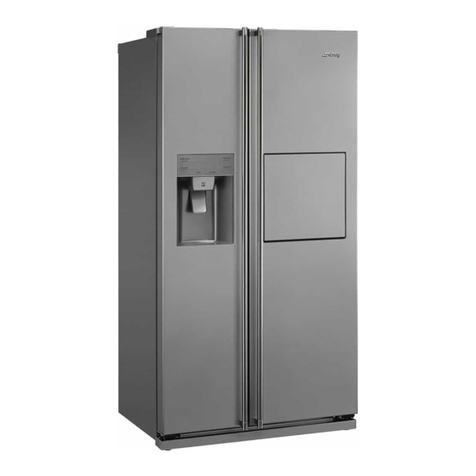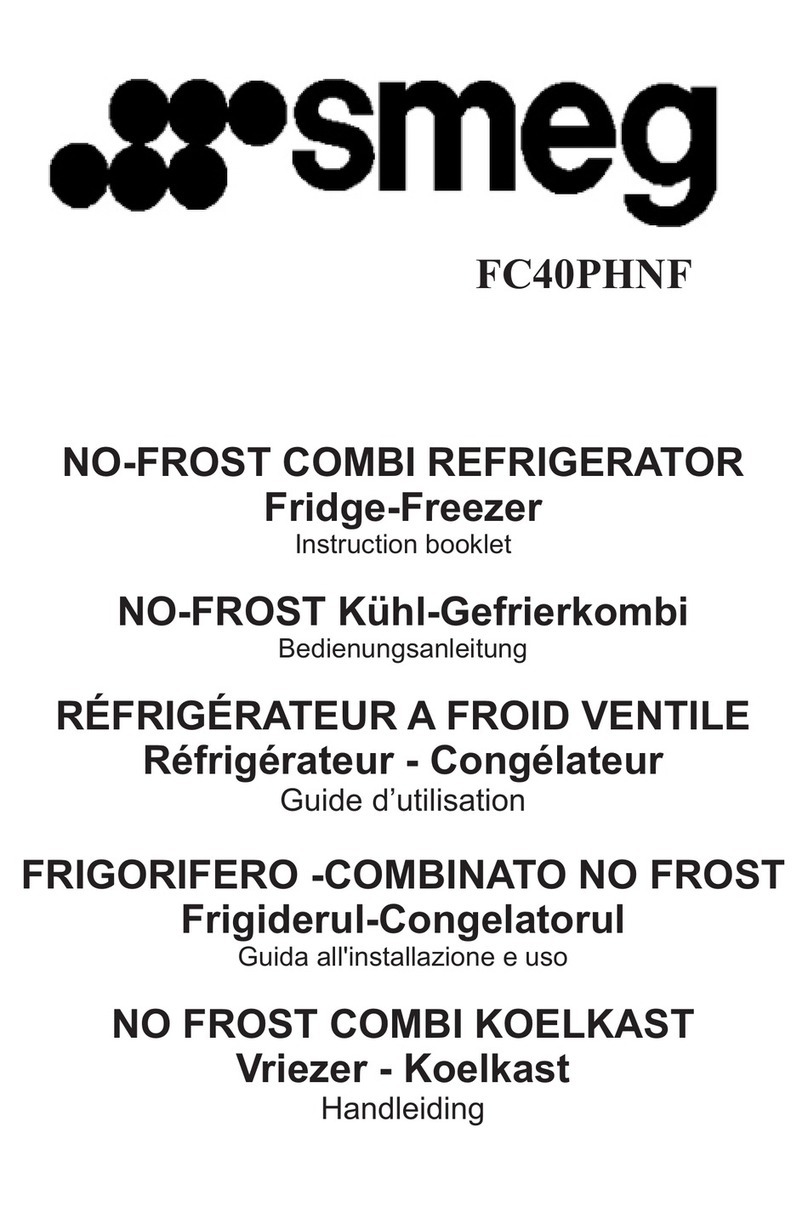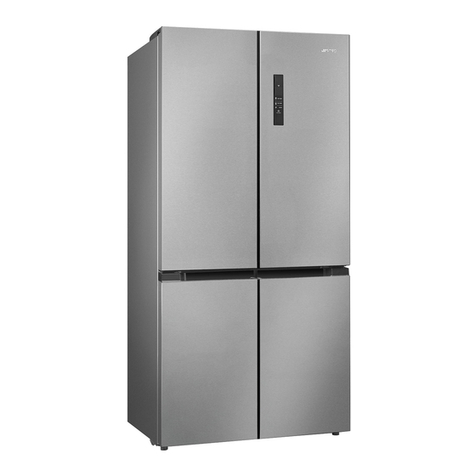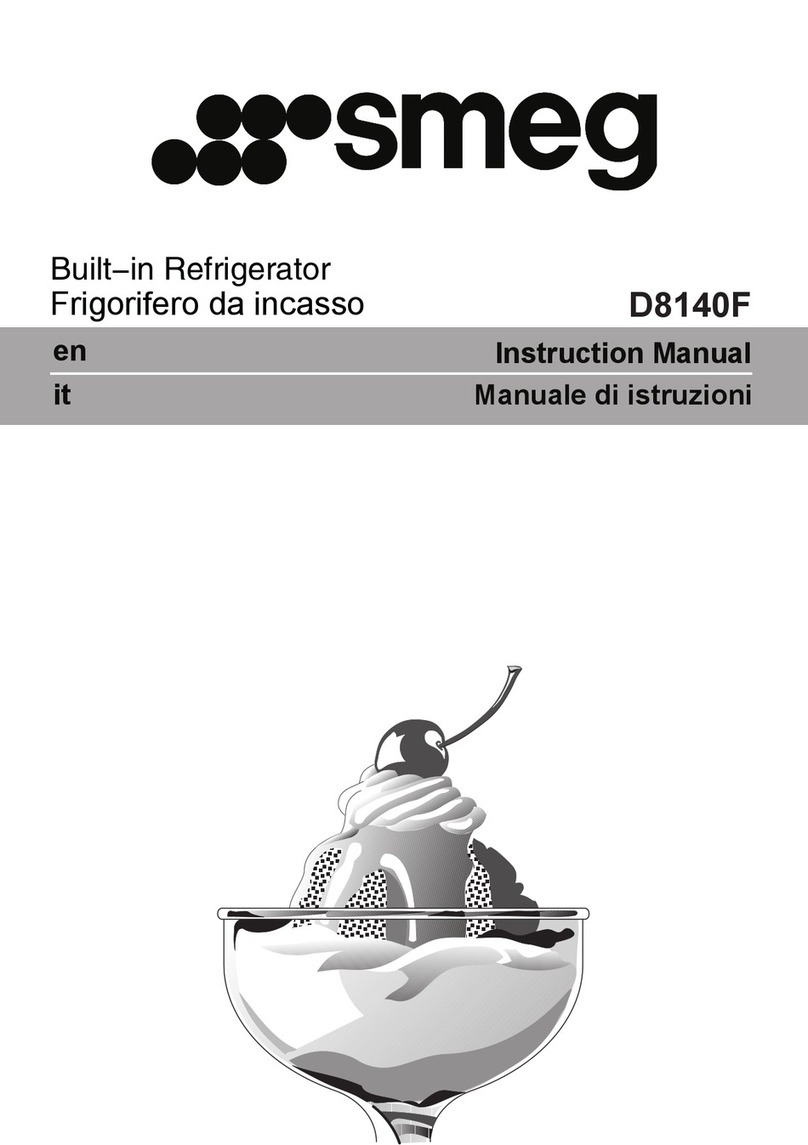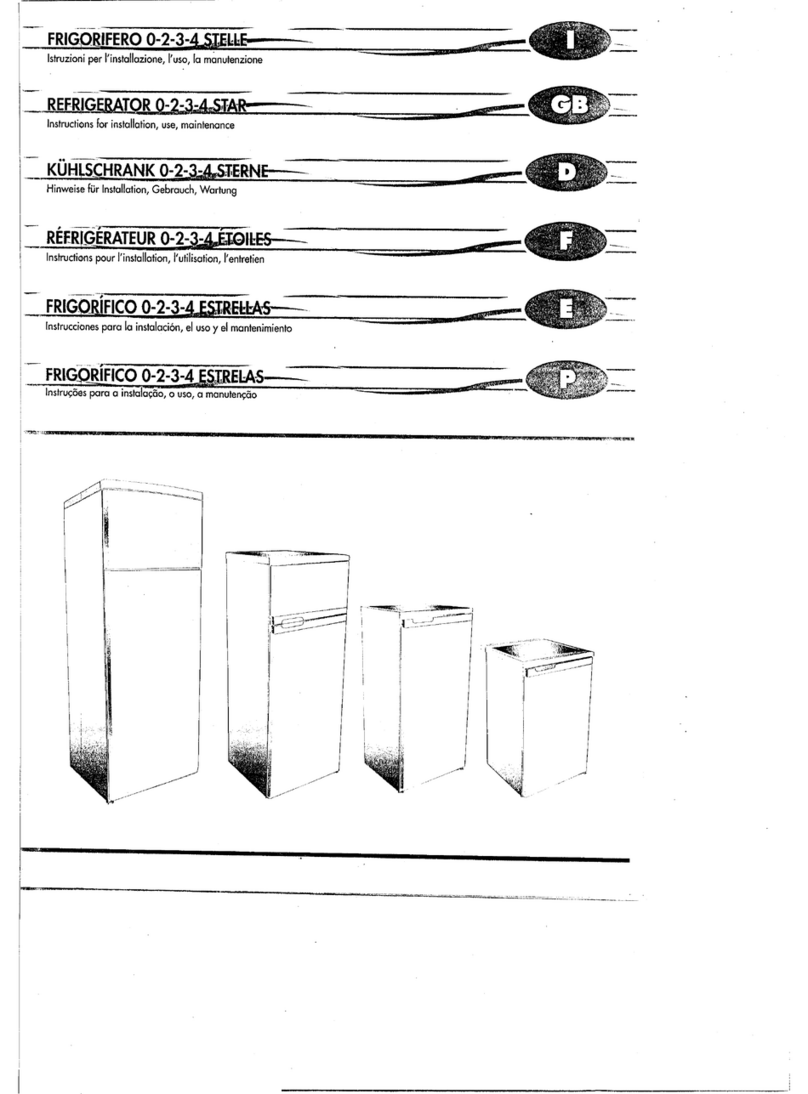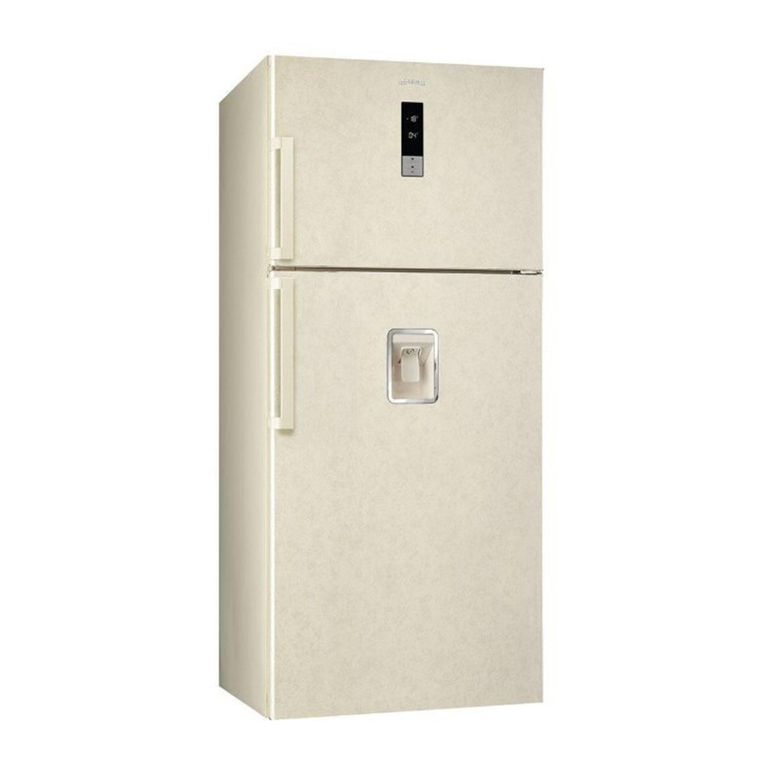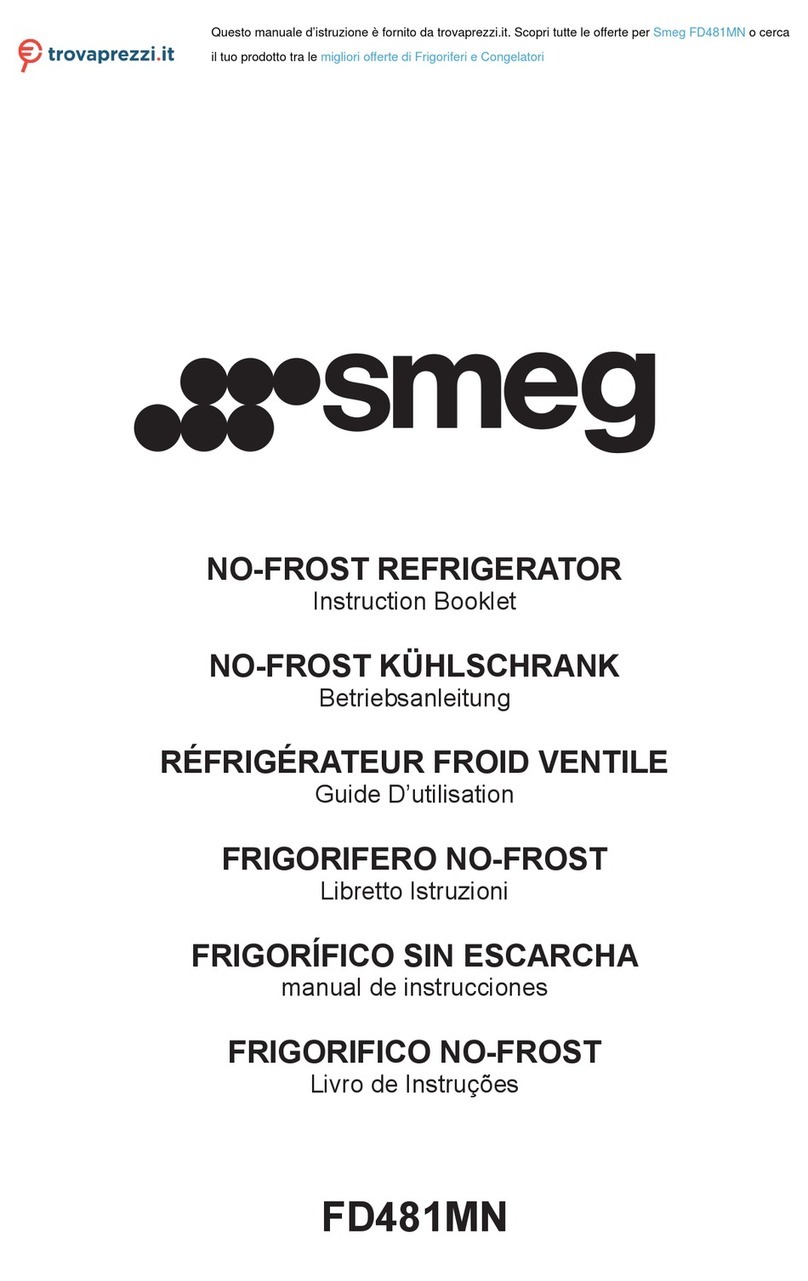14
GB
Precautions and tips
! The appliance was designed and manufactured in
compliance with international safet standards. The
following warnings are provided for safet reasons
and must be read carefull .
This appliance complies with the following
Communit Directives:
- 73/23/EEC of 19/02/73 (Low Voltage) and
subsequent amendments;
-89/336/EEC of 03.05.89 (Electromagnetic
Compatibilit ) and subsequent amendments;
- 2002/96/CE..
General safety
The appliance was designed for domestic use inside the
home and is not intended for commercial or industrial
use.
The appliance must be used to store and freeze food
products b adults onl and according to the
instructions in this manual.
The appliance must not be installed outdoors, even in
covered areas. It is extremel dangerous to leave the
appliance exposed to rain and storms.
Do not touch the appliance with bare feet or with wet or
moist hands and feet.
Do not touch the internal cooling elements: this
could cause skin abrasions or frost/freezer burns.
When unplugging the appliance alwa s pull the plug
from the mains socket, do not pull on the cable.
Before cleaning and maintenance, alwa s switch off the
appliance and disconnect it from the electrical suppl . It
is not sufficient to set the temperature adjustment knobs
on (appliance off) to eliminate all electrical contact.
In the case of a malfunction, under no circumstances
should ou attempt to repair the appliance ourself.
Repairs carried out b inexperienced persons ma
cause injur or further malfunctioning of the appliance.
Do not use an sharp or pointed utensils or electrical
equipment - other than the t pe recommended b the
manufacturer - inside the frozen food storage
compartments.
Do not put ice cubes taken directl from the freezer into
our mouth.
This appliance is not intended for use b persons
(including children) with reduced ph sical, sensor or
lack of experience and knowledge unless the have
been given supervision or instruction concerning use of
the appliance b a person responsible for their safet .
Children should be supervised to ensure that the do not
pla with the appliance.
Keep packaging material out of the reach of children! It
can become a choking or suffocation hazard.
Disposal
Observe local environmental standards when
disposing packaging material for rec cling
purposes.
The European Directive 2002/96/EC on Waste
Electrical and Electronic Equipment (WEEE),
requires that old household electrical appliances
must not be disposed of in the normal unsorted
municipal waste stream. Old appliances must be
collected separatel in order to optimise the
recover and rec cling of the materials the contain
and reduce the impact on human health and the
environment. The crossed out wheeled bin
s mbol on the product reminds ou of our
obligation, that when ou dispose of the appliance
it must be separatel collected.
Consumers should contact their local authority or
retailer for information concerning the correct disposal
of their old appliance.
Respecting and conserving the
environment
Install the appliance in a fresh and well-ventilated
room. Ensure that it is protected from direct sunlight
and do not place it near heat sources.
Tr to avoid keeping the door open for long periods
or opening the door too frequentl in order to
conserve energ .
Do not fill the appliance with too much food:
cold air must circulate freel for food to be
preserved properl . If circulation is impeded, the
compressor will work continuousl .
Do not place hot food directl into the refrigerator.
The internal temperature will increase and force the
compressor to work harder and will consume more
energ .
Defrost the appliance if ice forms (see
Maintenance). A thick la er of ice makes cold
transference to food products more difficult and
results in increased energ consumption.
Regularl check the door seals and wipe clean to
ensure the are free of debris and to prevent cold
air from escaping (see Maintenance).
